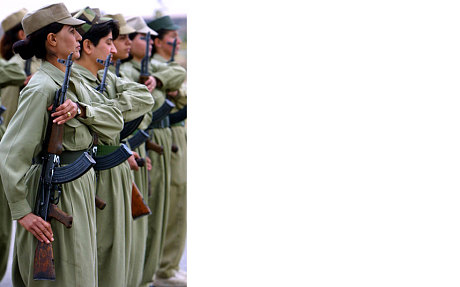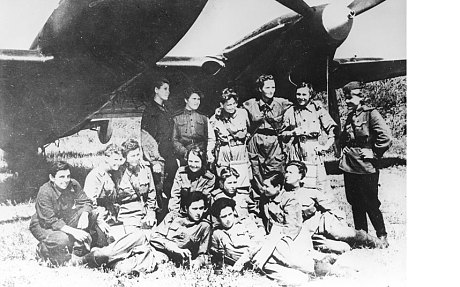The British are renewing a debate about the role of women in combat. While they serve in artillery units and in other roles in engineering battalions, as medics and even fighter pilots, they have yet to be given full combat status to kill on the battlefield in hand to hand or line of sight weapons fire. Yet, there have been women that have served in combat throughout world history, often with valor.
Women now make up almost 12% of UK armed forces, but still cannot enter into certain combat roles on the field. European law dictates, however, that this policy must be reviewed no later than 2018. Former head of the British Army General Sir Peter Wall has recently commented that permitting women in combat roles is something that should be considered seriously.
The traditional viewpoints are still hotly debated, questioning physical strength and capabilities of women. Many still feel it isn’t proper for a woman to be on the battlefield. History nevertheless, is full of examples.
Most recently, the Kurdish army has employed women effectively as a part of its forces. The Kurdish army’s freedom fighters have been in conflict with Islamic militants in their region. Previously known as “ISIS”, some news sources still refer to the Islamic group by this name. The Kurds have 600 female fighters in an army of 150,000, one reason for which is many of the islamist fighters believe, if a woman kills them, they won’t get their 72 virgens in heaven. This gives women an advantage the freedom fighters may use, as some of the enemy lose their nerve and cannot fight effectively in battle.
Since the 1980’s, a concerted effort has been made to integrate women into the fighting force of the Liberation Tiger of Tamil Eelam and now make up one third of their total fighting force, although now in a state of truce with the Sri Lankan government. Two divisions consisting of an all-female fighting force have been a vital part of the separatist group’s fight with the state for the past 26 years.
Starting in 1967, women were recruited into the Sandinista guerrilla army and made up 67% of the fighting force in 1987. Images of a woman carrying a rifle while nursing an infant appeared in posters, helping to build female combat strength in early years. Today 1/3 of Sandinista combat soldiers are women.
During the second world war, the anti-fascist Italian “Action Party”, the Partito d’Azione engaged 35,000 female partisans in combat roles, patrolling the streets with weapons in defiance of German occupation and Italian Fascists and ruling party.
The most famous of Soviet female fighters during World War II were an all female squadron of pilots flying night bombing missions against the Nazis, who referred to them as the “Night Witches”. While dropping 23,000 tons of bombs against German targets, they decorated their planes with flowers, The Telegraph reports.
Women serving in the Russian military, fighting in the first world war, were formed into 15 units staffed by only women soldiers. Said to be primarily a means to raise the spirits of men fighting and dying on the battlefield, eventually they numbered over six thousand who served in trench warfare with the Battalions of Death in combat and reconnaissance missions into enemy territory.
In the American Civil War of the 19th century, it is now estimated that as many as 250 women altered their appearance sufficiently to enter into the ranks as men of the Confederate army. Armies on both sides did not allow women to enlist as soldiers, yet many did in order to join their husbands or contribute directly to the war effort out of a sense of duty. When the time came to serve in combat on the battlefield, many did so with distinction.
Similar in appearance to the Greek Amazons of mythology, female fighters of the Dahomey Kingdom of Africa were nicknamed the Dahomey Amazons since the early 18th century in reports from the time. They were known to carry the severed heads of their enemies in conquest, serving in female only armies for defending and expanding the Dahomey kingdom.

